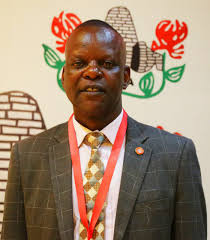ZIMBABWE is coming from by-elections conducted on March 26, 2022.
Twenty-eight National Assembly seats and 122 local government vacancies were up for grabs in long-awaited by-elections which had been delayed due to the COVID-19 pandemic restrictions.
A voter turnout of 35% was recorded. The period January to March 2022 was characterised by interesting events and processes typical and atypical of by-elections previously held in Zimbabwe.
First, the elections were the first to be conducted under COVID-19 regulations and restrictions.
Second, having been largely a result of recalls within the Movement for Democratic Change Alliance, the by-elections offered the first chance for voters to have a say in the matter.
Third, they were followed by huge turnouts at rallies of the new party Citizens Coalition for Change (CCC) and Zanu PF.
Keep Reading
- Chamisa under fire over US$120K donation
- Mavhunga puts DeMbare into Chibuku quarterfinals
- Pension funds bet on Cabora Bassa oilfields
- Councils defy govt fire tender directive
Lastly, the elections came on March 26 and left mixed feelings vis-a-vis the results, the voter turnout, the administration of the elections by the Zimbabwe Electoral Commission (Zec) and what this meant going forward and looking at 2023.
Voter apathy refers to individuals not voting in elections because they feel their participation will not make a difference.
Crewe et al (1992) distinguish between voter apathy and voter alienation as the basis of low political motivation. Apathy denotes a lack of feeling of personal responsibility, a passivity and indifference for political affairs.
Subsequently, it denotes the absence of a feeling of personal obligation to participate. Voter alienation, on the other hand, denotes an active rejection of the political system and thus, political participation is negative towards the political world.
Ioannis Kolovos and Phil Harris (2002) argue that there are three schools of thought explaining voter turnout (Pattie and Johnston 1998, Bartle 2002): a) theories of rational choice, b) sociological theories and c) theories of political efficacy.
Theories of rational choice argue that voters weigh up the costs and benefits of their actions. Thus, they will turn up to vote when they consider that the benefits of such an action outweigh the costs. Sociological theories argue that socio-economic characteristics affect political behaviour, identification with a party’s values and people’s propensity to vote.
In Zimbabwe turnout is higher among: i) those with lower income, ii) those of lower education, iii) blue-collar workers, iv) men, v) middle-aged and older voters, vii) those with closer community ties, viii) rural voters and ix) members of organisations.
Social factors may influence turnout by limiting the access of voters to political information and may affect their party identification.
Political efficacy theories argue that people alienated from the political process are less likely to vote.
Alienated voters feel that their vote will not make any difference, that politics has little influence in their lives and that the main parties do not address their concerns.
There have been episodes of voter apathy in Zimbabwe elections since 1980. 1996 (31,7%), 2005 (47%) and 2008 (42,7%) are typically low voter turnout years in Zimbabwe election history.
However, given that Zimbabwe has conducted nine general elections since independence, it might be said that Zimbabwe is not a generally apathetic country when it comes to elections.
By-elections, however, have almost always been characterised by average to low voter turnout because the political stakes are considered to be low.
The recent by-elections were no exception despite the hype surrounding them for several reasons including the entrance of the new CCC party, the fact that they were a referendum on who is the most popular opposition party, the number of by-elections conducted on the same day (so many wards and constituencies were up for grabs at the same time) due to COVID-19 setbacks and the attendance of the rallies prior to March 26.
Twenty-eight National Assembly seats and 122 council seats were up for grabs in the just ended by-elections. CCC won 19 of the National Assembly seats, while Zanu PF got nine.
In the local government elections, Zanu PF won 47 while CCC garnered 75 seats. The cumulative vote for the CCC is 129 799 and that of Zanu PF is 128 399 giving only 1 400 as the difference. The statistics show that the rural voter is less apathetic, is more associated with the organisation and community and likely to go and vote. Zanu PF had almost equal votes to CCC in the popular vote but with much less constituencies.
An analysis of the voters’ roll by the Election Resource Centre (ERC) revealed that “for 27 of the 28 constituencies with by-elections there is a net decrease in registrants. However, for Kwekwe Central there was a net increase in registrants of 1 470 (6,02%) on the 2022 VR. On average for all 28 constituencies there is a net decrease of 1,36%”. There is, therefore, no significant change to the numbers in comparison with 2018.
Trust in Zec is at an all-time low (42%) as of the last Afrobarometer of 2021. This is down from an all-time high of 48%. It is clear that Zimbabweans have little trust in the election management body and this in turn influences their decision to vote. Without trust in the election authorities, voting feels like a waste.
However, there were active popular individuals and examples include the posting of Zec official conducting pre-election activities as election fraud could have done harm to credibility and trust for Zec.
The continued online audit of the voters’ roll by Team Pachedu revealed a lot of irregularities which ZEC disputed and or explained. True or not, the findings by the Team Pachedu did a lot to dampen any positive hopes for making a vote that actually counts -Citizens in Action Southern Africa
Engineers seek to tackle gender imbalanceTHE Zimbabwe Institution of Engineers and the Zimbabwe Information and Communication Technologies Women are looking forward to celebrating International Girls in ICT Day 2022.
During the hackathon week, starting April 11 to 15, the participants will develop and demonstrate their web design skills and knowledge of HTML, PHP, WordPress, Joomla, Python, Jumla to industry experts.
There’s a current gender imbalance in the ICT departments and an increasing demand for ICT careers where a few female students pursue ICT-related studies.
Due to the limited support, this imbalance will not change.
This competition is an excellent way for girls to combine creative expression with technology while gaining ICT skills and confidence and is aimed at improving participation for girls in STEM fields, which is a fundamental step in building an inclusive, diverse and innovative workforce.
The hackathon started with registration of girls who would like to participate on March 21, ending April 8. The week beginning April 11 is our first round one, ending on April 15.
The second round of the hackathon will be on April 26 at the University of Zimbabwe computer lab.
Our finalists will demonstrate their skills, leading us to April 28, where we will have the award ceremony for the winners and the GIICT 2022 celebration event. –Nozipho Siso
Youths in informal economy must be supported
THE Zimbabwean social, political and economic landscape has gone through radical transformation in the last two decades. The turbid political environment has made Zimbabwe an unfavourable destination for investors, while domestic products have struggled to find markets.
As a result, industries have closed shop and the formal labour force has been forced into the informal economy. Many governments in southern Africa and Africa as a whole do not recognise the importance of the sector despite its enormous contribution to the region’s economy.
For instance, the United States Agency for International Development (USAid, 2010) estimated that the value of trade conducted by youth and women in the informal economy, in the Sadc region was approximately US$7 billion annually.
However, many governments view it as a threat as opposed to managing and nurturing it so that it becomes a secure and viable support system for people who cannot secure formal employment or for those who have identified an opportunity to create a business for themselves and employ others.
According to the International Labour Organisation (ILO), the informal economy in Zimbabwe is characterised by poor working conditions. In its situational analysis of women in the informal economy in Zimbabwe, the ILO further states that in spite of the health and safety risks that abound in the informal economy, study findings revealed that labour inspectors hardly ever visit such working premises mainly due to lack of resources and the absence of formal systems and structures for extending the same services to the informal economy as is done for the formal economy.
The informal sector literature has shown that youth constitute most of the workers in the informal sector in almost all developing countries. According to research findings by UNRISID (2010), because of the large proportion of the youth in the informal sector there is often a tendency for them to be involved in erratic and often corrupt activities.
In Zimbabwe, the increase in the percentage of youth representation in the informal sector has been attributed to a variety of factors.
One of the major factors is its easy accessibility and ready availability for youth participation in the sector. Research by Carr and Chen (2001) demonstrated that the connection between employment in the informal sector and being poor is often stronger among the youth than the older generation.
According to the same findings, the older generation’s participating in the informal sector tends to be overrepresented at the top segments of the sector while youth are at the bottom tiers where they specialise in trading in perishable items.
This analysis posits that youth dynamics in the informal sector points to intricacies involved in the context of urban and informal sector development.
Even though the youths are the majority in the informal economy, they are often excluded from policy-making processes and this exclusion manifests in different forms.
Participation mechanisms and processes for youth in the sector are often inappropriate, employing economic jargon or disempowering language with youth being viewed in a negative light. –Viset





